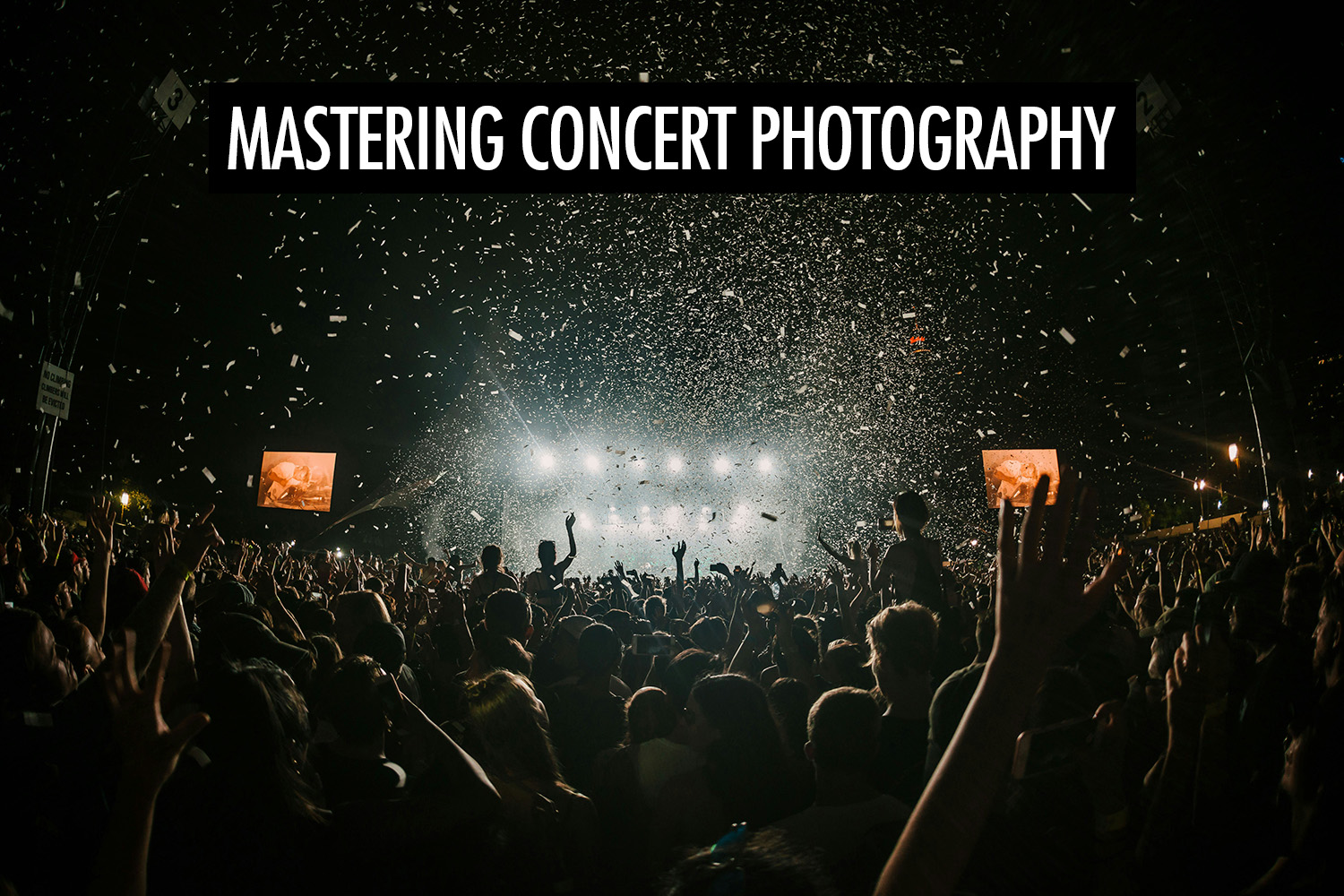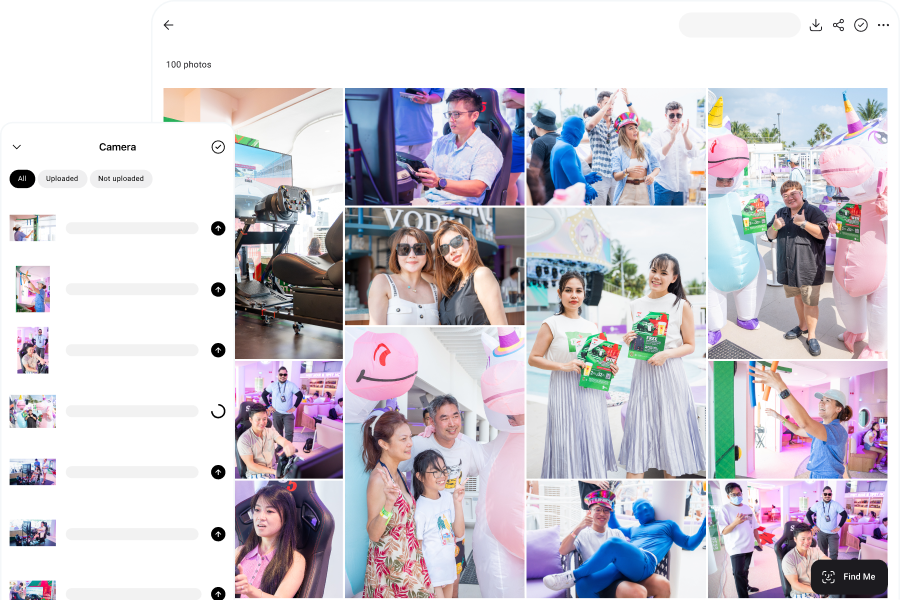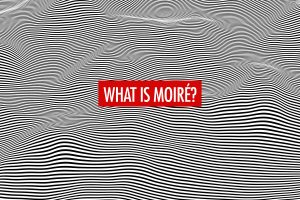There’s nothing quite like the energy of live music. As the lights dim, the crowd erupts, and the first note fills through the venue, you know you are part of something special. Concert photography gives you the chance to preserve that experience, capturing not only the performers on stage but also the atmosphere and emotions that make live shows unforgettable.
For many photographers, concerts present one of the most exciting yet challenging environments to work in. The lighting changes every second, the artists are constantly moving, and the crowd is never still. Unlike a portrait session or a carefully planned shoot, you have no control over the conditions. Success depends on your ability to adapt quickly, anticipate key moments, and use creativity to work with whatever the stage presents.
That unpredictability is also what makes concert photography so rewarding. When you capture the exact moment a singer leans into the microphone or the energy of the crowd during a chorus, your photos become a visual representation of live music. Each image tells a story, one that resonates with both the fans who were there and those who wish they had been.
This guide will take you through everything you need to know to get started in concert photography, from understanding the essence of live music imagery to mastering the technical challenges of shooting in low light. You will learn how to capture unrepeatable moments on stage, how to streamline your editing workflow, and how to build a career in this vibrant niche. Whether you are photographing your first local gig or aiming for a spot in the photo pit at a major music festival, these concert photography tips will help you take the leap.
The Essence of Concert Photography
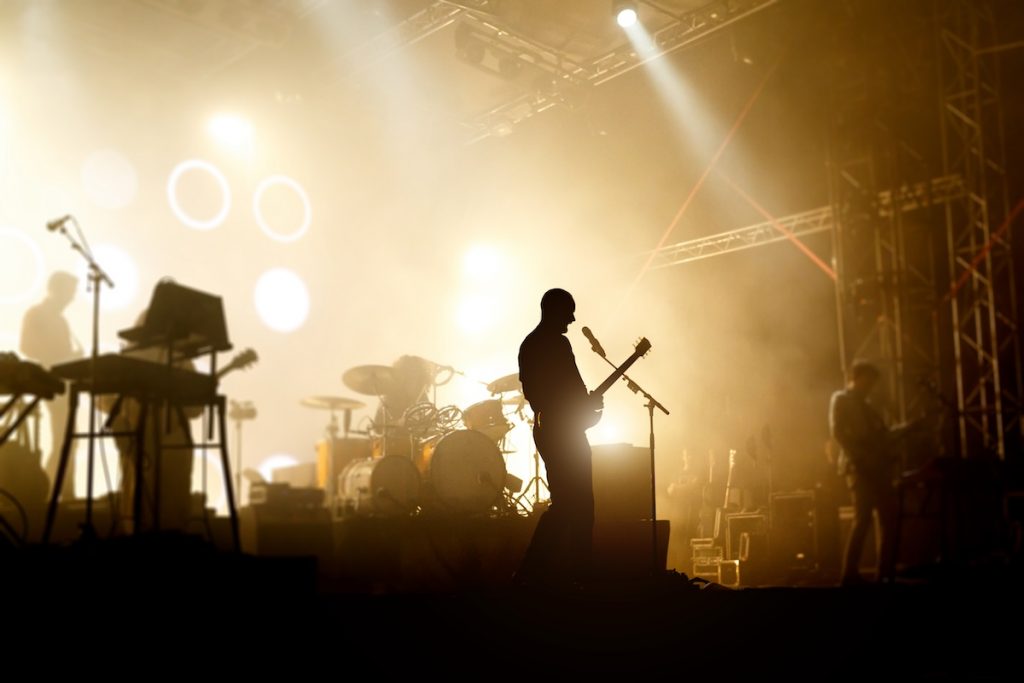
Concert photography is about translating sound and movement into images that people can feel. It is not just about showing who was on stage. It is about freezing the passion, rhythm, and atmosphere of a performance in a way that makes viewers hear the music in their minds. A strong photo should make someone feel the thump of the bass, the glow of the lights, and the electricity of the crowd.
What makes live music photography unique is how little control the photographer has over the environment. In a studio, you can adjust every detail; at a concert, everything shifts constantly. Lights change color and intensity without warning, the smoke machine might fill the stage at the worst possible moment, and performers rarely stay still. Rather than fighting these conditions, good concert photographers learn to anticipate and adapt. The unpredictability becomes part of the artistry.
The power of a concert image lies in its ability to capture energy. A guitarist lost in a solo, a drummer mid-strike, or a singer reaching toward the crowd are all moments that reveal the emotion of live music. Just as important are the fans. Raised hands, faces lit by stage lights, or voices joined together in song complete the story and give context to the performance.
At its heart, concert photography is about preserving feelings that only exist for a few seconds on stage. Whether you are covering a quiet acoustic set in a small café or a high-energy arena show, the goal is the same: to capture the spirit of the music and the atmosphere surrounding it. The best concert photos transport viewers back in time and let them relive the experience long after the final note has faded.
Capturing the Moment
Concert photography is built on anticipation. Unlike other genres where you can stage or repeat a scene, live music photography only offers you one chance. The lights shift, the artist moves, and the crowd reacts in ways that can never be replicated. An important tip is learning to read the rhythm of a performance and predict when something special is about to happen is what separates a great concert photographer from a good one.
Stage Presence
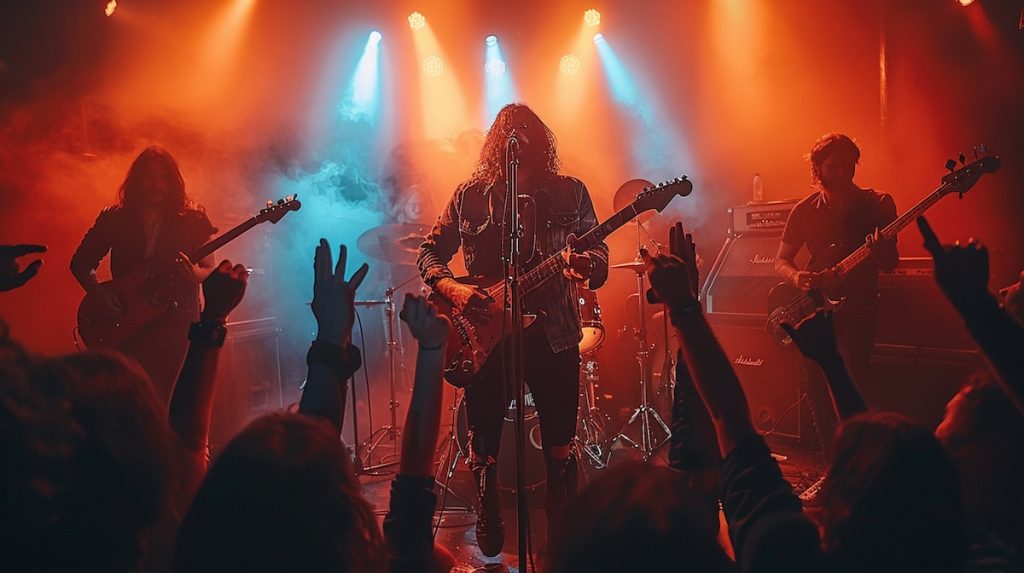
Artists communicate through more than just their music. The way a singer grips the microphone, the expressions on a guitarist’s face, or the energy of a drummer in mid-action all create powerful visual moments. Concert photographers must watch closely for these expressions and gestures, capturing them at their peak. Timing a shutter click to match the intensity of the performance often results in the most memorable live music photos.
Atmosphere
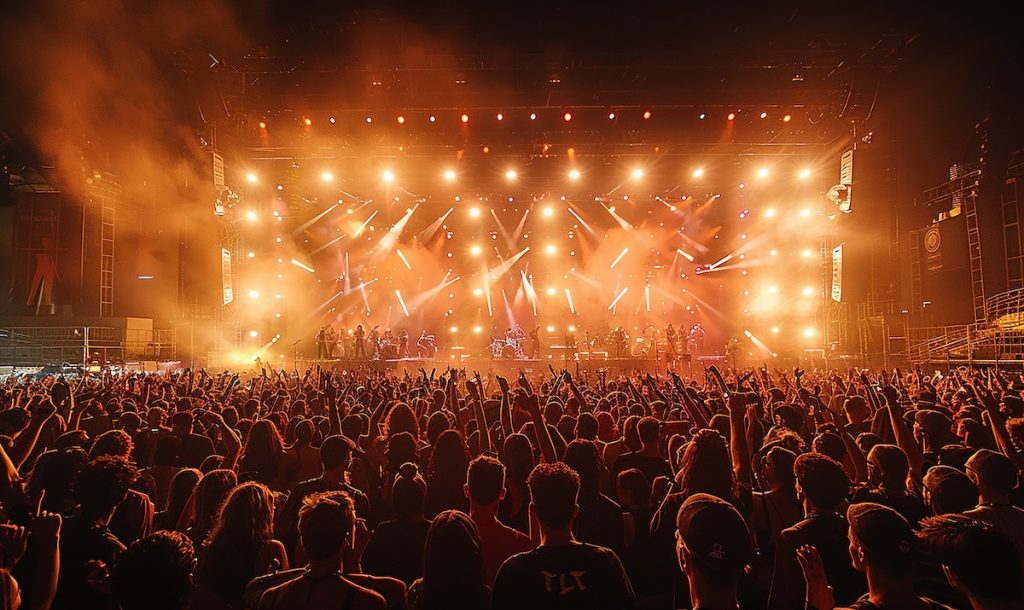
The stage itself is a dynamic backdrop. Smoke machines, confetti, lasers, and pyrotechnics add drama and texture to a scene. When used creatively, these elements can elevate a concert photo from simple documentation to something cinematic. Positioning yourself so the lights form a halo around the artist, or using bursts of color to frame the action, creates images that feel larger than life.
Audience Energy
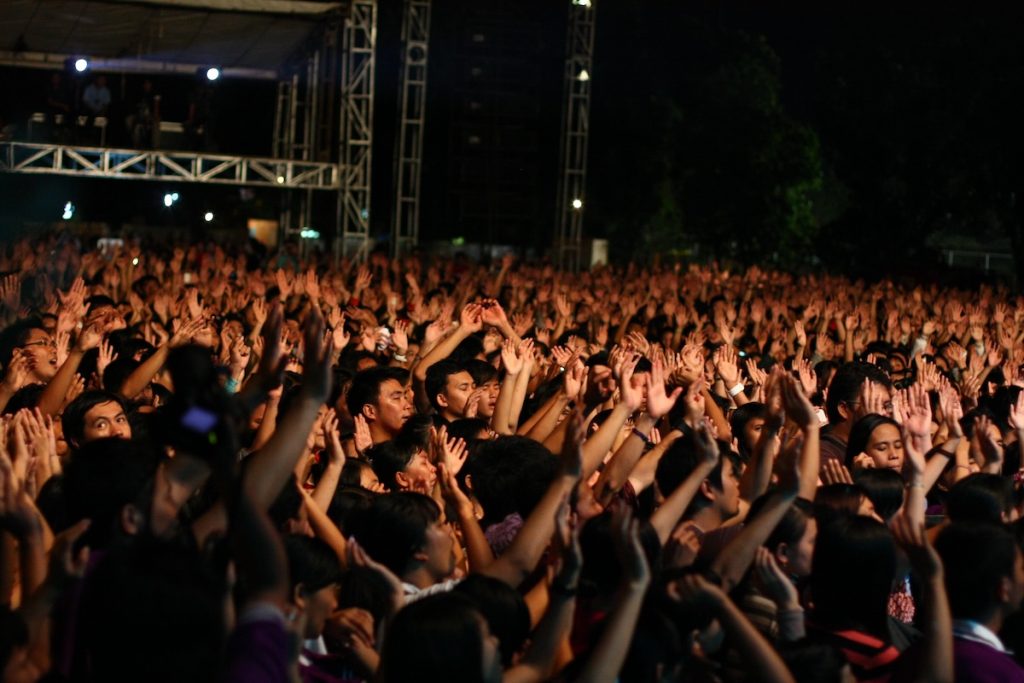
No concert story is complete without the crowd. Fans raising their hands, faces illuminated by stage lights, or the collective movement of thousands of people all add layers of emotion to the narrative. Capturing these interactions not only highlights the connection between the performer and the audience but also shows the scale and energy of the event. Some of the most iconic concert photos are not just of the artists but of the crowd that surrounds them.
Anticipation in Action
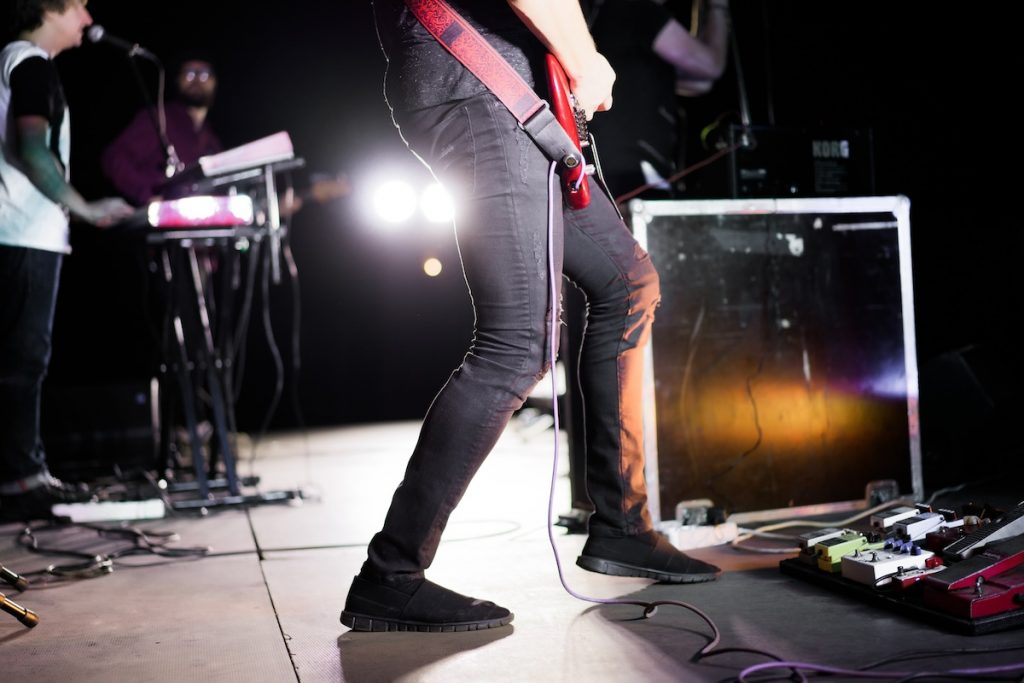
The best concert photographers learn to anticipate the flow of a set. If you know the music, you can sense when a chorus is about to hit, when the lights will flash, or when an artist might interact with fans. This ability to predict and prepare allows you to be ready for moments others might miss. A split second can mean the difference between a blurred shot and a frame that defines the night.
Capturing the moment in concert photography is about more than technical skill. It is about listening, observing, and immersing yourself in the performance so you can translate its energy into images that last long after the concert is over.
How to Become a Concert Photographer
Breaking into concert photography can feel intimidating, but the path is clearer than many think. Unlike other creative fields, opportunities are often right in front of you at small venues, local shows, and community events. Building your reputation is a step-by-step process, and each stage helps you gain credibility while refining your craft.
Here are some tips to help you get started with live music photography.
Start With Small Shows
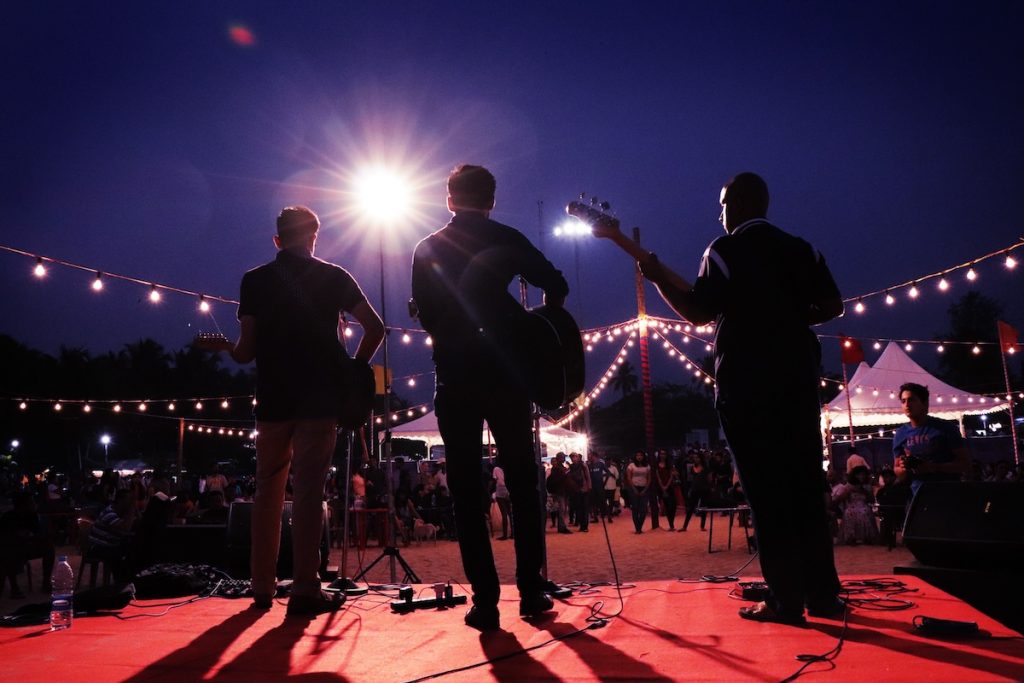
Every great concert photographer begins in intimate venues. Local gigs, open mics, or small club performances are more forgiving environments, giving you the freedom to experiment with settings and composition. These shows also allow you to get close to the stage, something that is harder to do in larger arenas. By shooting smaller acts, you build both confidence and a portfolio that can grow with you.
Get a Photo Pass
When you are ready to move on to bigger concerts, a photo pass is your ticket into the pit. These passes are usually managed by the venue, event organizer, or band’s management. While it can be challenging to secure one at first, publications or blogs can help. The key is to present yourself professionally and demonstrate that your photos will be used in a way that benefits the artist or event.
Network With Publications
Publications such as online music blogs or local magazines are often the bridge between concert photographers and access to shows. Start by reaching out to smaller outlets that cover the local scene. Offer to contribute photos in exchange for credit, and use this experience to build a portfolio. Over time, these relationships can lead to larger opportunities and steady assignments.
Build a Photo Blog
Your work deserves a home, and a photo blog is one of the best ways to showcase it. Think of it as your digital stage. Post full galleries from shows you cover, share behind-the-scenes stories, and highlight your best shots. A well-maintained portfolio not only attracts fans and potential clients but also shows artists and publications that you take the craft seriously.
Understanding Copyright
Finally, it is essential to understand the rules around copyright and usage. Concert photos fall into a unique category where artists, venues, and labels may set specific restrictions. Knowing your rights and respecting those of the performers helps you avoid conflicts and ensures your work is protected. Establishing clarity upfront, whether through agreements or watermarks, reinforces your professionalism and safeguards your photography.
Becoming a concert photographer does not happen overnight, but by starting small, building connections, and protecting your work, you set yourself on a path that can lead from local stages to international tours.
Technical Mastery in Concert Photography
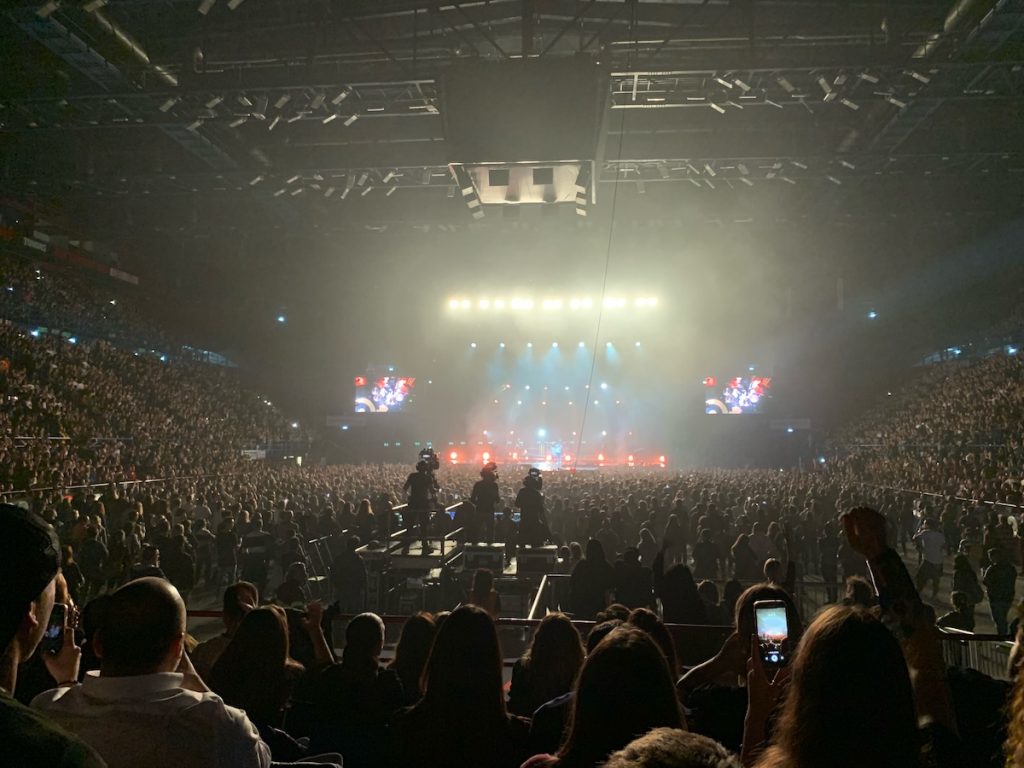
Concert photography is as much about technical skill as it is about artistic vision. The combination of low light, fast movement, and unpredictable stage effects pushes photographers to know their gear inside out. Mastery of concert camera settings, lighting choices, composition, and editing ensures that the raw energy of a live performance translates into striking images.
Camera Settings
The foundation of strong concert photography lies in how you handle your camera in challenging low light conditions. A low aperture lens, often f/1.8 or f/2.8, allows more light into the sensor and makes it easier to capture clear shots in dark environments. Pair this with a fast shutter speed to freeze movement, especially when musicians are jumping, headbanging, or moving across the stage. If the shutter speed is too slow, motion blur will creep in, so aiming for at least 1/250s or faster helps preserve the sharpness of your concert photos.
High ISO settings are often unavoidable in concerts, but modern cameras handle noise better than before. Instead of being afraid of grain, learn how to balance ISO with aperture and shutter speed so that your photos stay sharp without losing too much detail. Start at ISO 1600 and increase if required. Spot metering is another invaluable tool, as it allows you to expose correctly for the performer even when the background is blown out by bright lights. It ensures that faces and key expressions remain visible while still preserving the drama of stage lighting.
Finally, always shoot in RAW. JPEGs may save space, but RAW files hold the maximum amount of information, giving you more freedom in post-processing. They allow you to recover highlights from harsh spotlights, adjust shadows where details are hidden, and fine-tune white balance when the stage lighting casts strong colors. Shooting in RAW is the safety net that ensures your hard work in the pit pays off in the editing room.
Lighting
Stage lighting is part of the concert experience, but it can also be one of the biggest hurdles. Bright spotlights, strobes, and deep shadows can overwhelm a shot. Learning to work with what is available is key. Avoid using flash, as it not only disrupts performers but also flattens the mood created by the stage lights. Anticipating lighting changes and adjusting quickly will help you capture the atmosphere as the audience experiences it.
Composition
Composition in concerts is about more than centering the performer. Use angles that emphasize the energy of the show, such as shooting from below to capture the dominance of the lead singer or framing the guitarist with the crowd in the foreground. Look for moments when the lights, movement, and expressions align, creating a visually balanced shot that tells a story.
Best Camera Gear
While skill is more important than equipment, the right gear makes a noticeable difference in low light photography. A full-frame camera body typically performs better at high ISO levels and provides greater dynamic range. Fast prime lenses such as a 50mm f/1.8 or 85mm f/1.8 are excellent for portraits and close-ups, while zoom lenses like a 24-70mm f/2.8 or 70-200mm f/2.8 offer flexibility for wider stage shots and distant performers. Accessories such as a monopod or extra batteries ensure you are prepared for long shows where opportunities cannot be missed.
Editing Workflow
Even the best in-camera settings cannot overcome the extremes of concert lighting, which makes editing a crucial part of the process. Start by correcting exposure and reducing noise, then adjust colors to bring out the vibrancy of the stage lights without overpowering the subjects. Pay attention to skin tones, as strong colored lights can cast unnatural hues. A consistent editing style across galleries helps build your signature look and presents your work as polished and professional.
Technical mastery does not come overnight, but with practice and the right tools, the challenges of live music photography become opportunities. Each setting, adjustment, and edit helps you turn fleeting stage moments into powerful visual stories.
Essential Shots in Concert Photography
Concerts are unpredictable, but certain moments and subjects define the experience. A strong portfolio balances intimate portraits of performers with wide shots that capture the full scope of the show. An important concert photography tip is to know what to look for, ensuring that you walk away with a complete story rather than a collection of random images.
Lead Singer
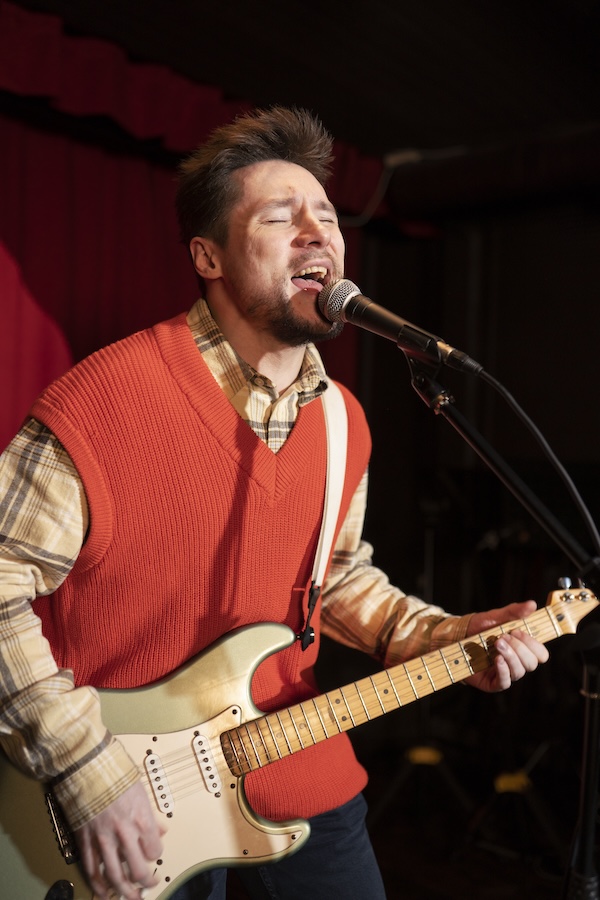
The frontperson is often the focal point of the performance. Their expressions, energy, and interaction with the crowd carry the spirit of the show. Close-ups of the singer’s face, mid-shots of them reaching into the audience, or full-body images that show movement all highlight their role as the center of attention. To make the most of these moments, anticipate when they step into the spotlight or hold a dramatic pose. Burst mode can help you capture fleeting expressions without missing a beat.
Guitarist and Bassist
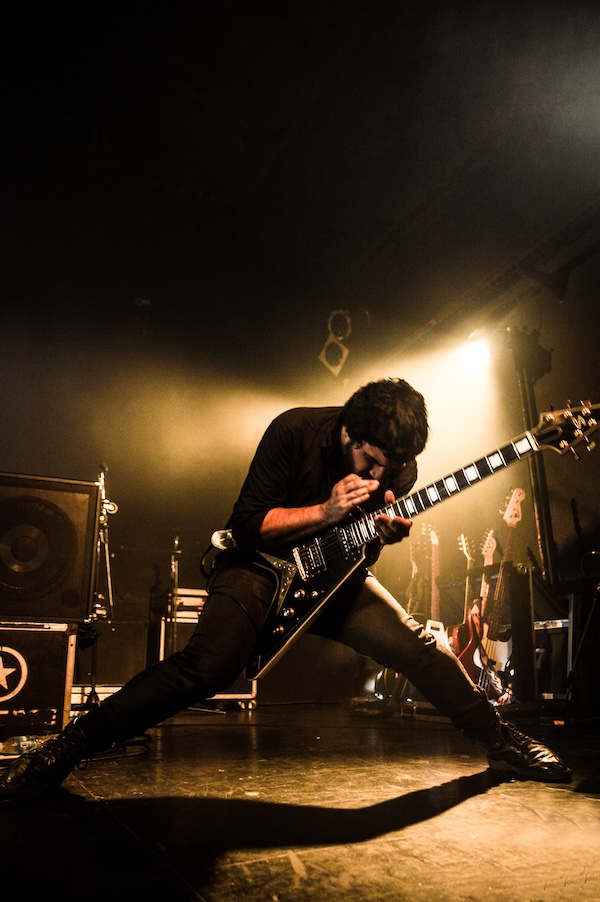
While the spotlight may favor the singer, guitarists and bassists provide plenty of dynamic moments. Think of fingers moving across strings, dramatic stances, or interactions between bandmates. These shots bring variety to your gallery and highlight the teamwork that powers live music. Try shooting from an angle that includes the instrument in the frame, as it reinforces the connection between the musician and their craft. If the lighting shifts to a soloist, be ready to catch the intensity of the performance.
Drummer
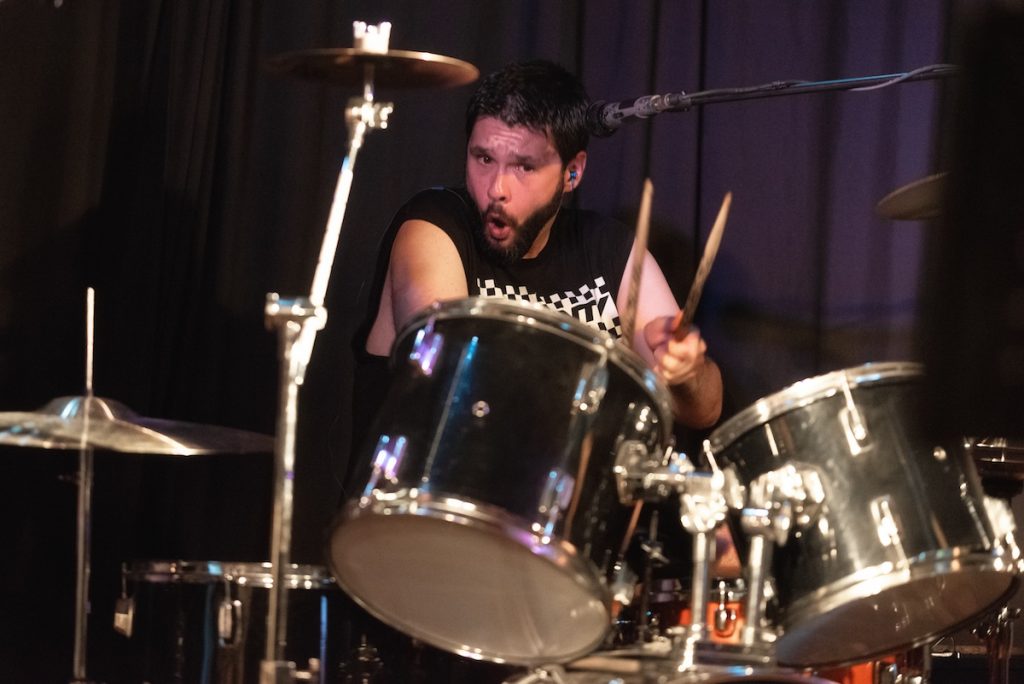
Drummers can be the hardest to capture since they are usually in the back surrounded by gear. Still, they add intensity and rhythm to your live music photography. Look for moments when sticks are caught mid-air or when cymbals are crashing. Shooting from side angles or elevated positions can help isolate them from the clutter of the kit. A slightly slower shutter speed can also create motion trails of the sticks, adding a sense of energy to the image.
Whole Band
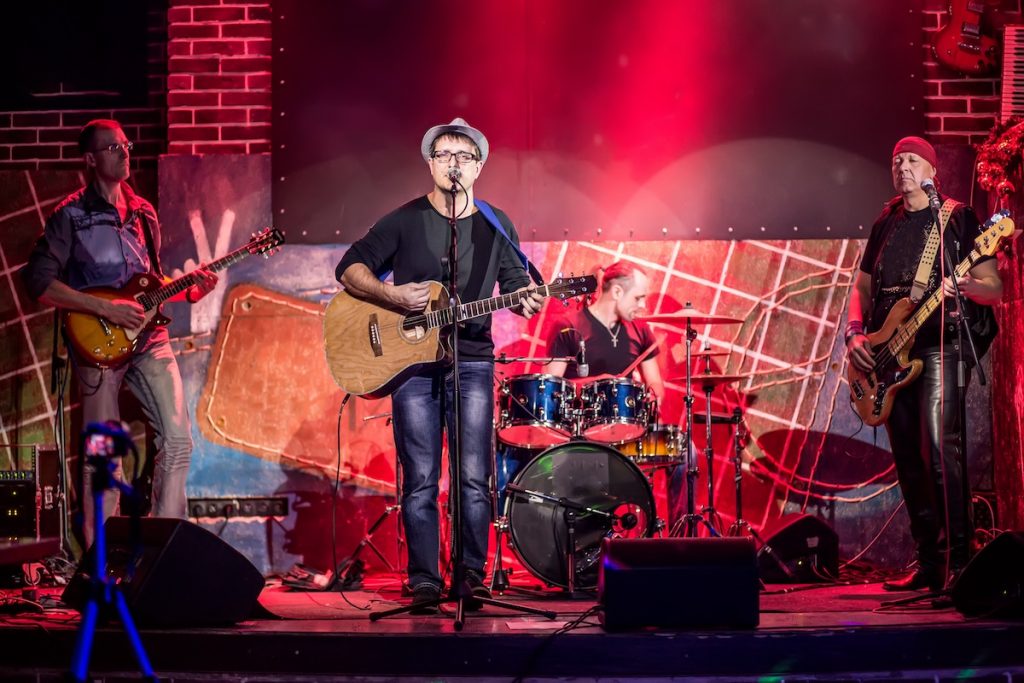
Wide shots of the entire group on stage are essential in concert photography. They provide context and show the performers as a unit rather than individuals. These images are also popular with bands themselves, as they often prefer visuals that emphasize the collective rather than just one member. To nail these shots, position yourself where you can see the whole stage and wait for moments when the lighting is balanced across all members. Timing is key, as you want to capture when everyone is engaged in the performance rather than caught mid-transition.
Audience

The energy of a concert is not only on stage but also in the crowd. Capture fans singing, cheering, or holding up phones and lighters to add emotion to your series. These concert photos place the viewer inside the experience and highlight the connection between artists and fans. Keep an eye on the audience during big moments like a chorus or encore, and do not hesitate to turn away from the stage to photograph raw emotion from the crowd.
Stage Details
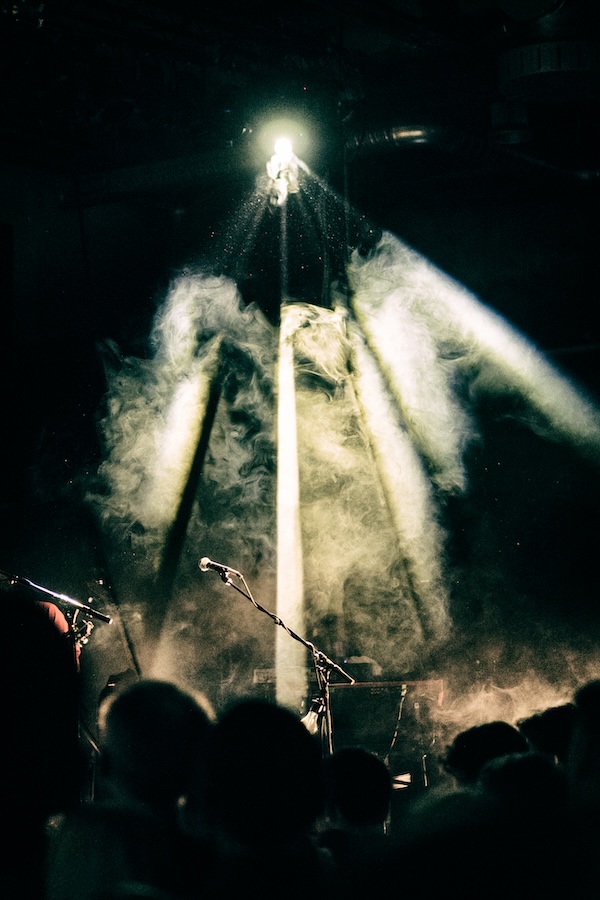
Beyond the performers, small details help to tell a full story in concert photography. This could be a close-up of a setlist taped to the floor, the glow of pedals at a guitarist’s feet, or the lighting rig casting dramatic colors across the stage. These supporting stage photos enrich your gallery and make it feel more complete. Switch to a wider aperture for these moments to create a shallow depth of field, isolating the details while keeping the mood of the scene.
A balanced mix of close-ups, wide shots, and crowd perspectives transforms your concert photography from simple documentation into storytelling. By focusing on these key subjects and applying the right shooting techniques, you create a narrative that captures not just what happened on stage but what it felt like to be there.
Building a Concert Photography Portfolio
A strong portfolio is the bridge between passion and professionalism. It shows potential clients, publications, and even bands themselves what you are capable of. More than just a gallery of images, a portfolio is a curated collection that highlights your eye for detail, your technical mastery, and your ability to tell a story through live music photography.
Here are some tips on how to build a strong concert photography portfolio.
Showcase Your Best Work
Quality is always more important than quantity. A portfolio filled with twenty outstanding images will have more impact than one with a hundred average shots. Choose photos that not only stand out individually but also show variety, such as close-ups, wide band shots, and crowd energy. Together, they give viewers a sense of how you approach concerts from multiple angles.
Prioritize High-Quality Images
Concerts can be chaotic, and not every shot will turn out perfect. Your portfolio should feature only the sharpest, most compelling work. Look closely at composition, lighting, and clarity before selecting what goes in. Clients and publications are drawn to professionalism, and a single weak image can distract from your strengths.
Create an Eye-Catching Portfolio Page
Whether it is a website or a dedicated page on a photography platform, presentation matters. Keep the design clean and easy to navigate so the focus stays on your images. A useful tip is to organize your work by event, band, or type of shot to make browsing effortless. A visually polished portfolio communicates that you are serious about your craft.
Include About Me and Contact Information
Your photos tell a story, but your portfolio should also tell people who you are. A short bio helps visitors understand your background and approach to live music photography. More importantly, make it easy for potential clients to reach you by including clear contact information. Missed opportunities often come from something as simple as not being accessible.
Update Regularly
Concert photography is about capturing moments in time, and your portfolio should reflect growth and evolution. Update it with fresh work to show that you are active and engaged in the scene. Regular updates also demonstrate consistency, which is reassuring for clients who want to know they can rely on you for future events.
Turning Passion Into Profession
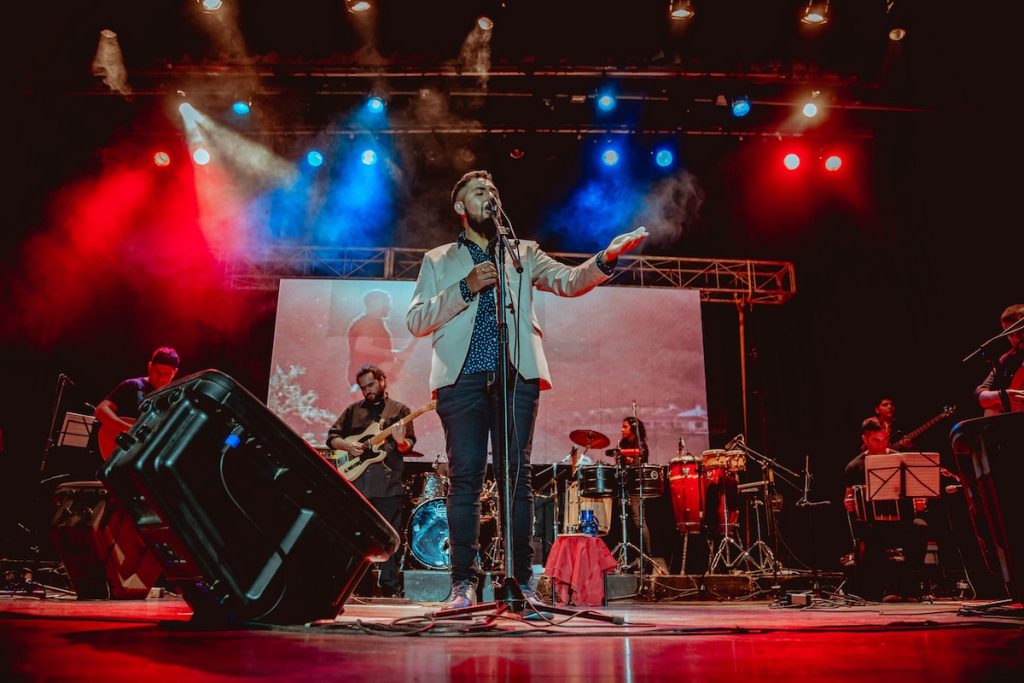
Concert photography can start as a passion, but for many, it evolves into a profession. Turning it into a sustainable career requires more than just technical skill. You need to understand the industry, find your niche, and market yourself effectively. Success comes from building genuine connections, standing out in a crowded field, and continually learning from experience.
Finding Your Niche
Every concert photographer has a unique perspective, and discovering yours is crucial. Some excel at capturing raw energy in small clubs, while others shine in large festivals with elaborate lighting and stage setups. Deciding whether you want to focus on local acts, touring bands, or music publications helps you tailor your portfolio and outreach. A clear niche also makes it easier for clients to remember and recommend you.
Building Connections
Relationships are at the heart of this industry. Bands, managers, promoters, and venue staff all play a role in giving concert photographers opportunities. Be professional, approachable, and respectful in every interaction. Over time, trust can lead to repeat assignments, exclusive access, or even touring opportunities. Networking is not about handing out business cards, but about creating genuine connections that last.
Marketing Strategies
Even the best photos need visibility. Use social media platforms to share your work, tagging bands and venues to increase reach. A professional website or blog remains essential, as it serves as your digital business card. Consider offering behind-the-scenes content or short write-ups about shows, as these add personality and engage audiences beyond just the photos.
Monetization
There are several paths to earning income in concert photography. You can license images to publications, sell prints to fans, or work directly with bands for promotional material. Some concert photographers also expand into related fields, such as portraits, album covers, or tour documentation. The key is to diversify your income streams so that you are not relying on a single source of revenue.
Standing Out
The concert photography field is competitive, and standing out requires more than sharp images. Develop a consistent style that people can recognize instantly, whether it is in your use of color, framing, or storytelling. Deliver work quickly after shows, as timeliness often matters as much as quality. Reliability and professionalism will set you apart as much as creativity.
Learning from Experience
Every show offers lessons. Maybe you discover a new angle that works well with certain lighting, or you find a better way to interact with stage managers. Staying open to growth ensures that you keep evolving alongside the music scene. Concert photography is as much about adaptability as it is about skill.
The business side of concert photography is about balance. You need the artistry to capture unforgettable moments, but also the strategy to build a career around them. By defining your niche, cultivating relationships, and continually learning, you create opportunities that can take your work from small stages to global tours.
Instant Photo Delivery with Honcho
Concerts move at a fast pace, both on stage and in the crowd. From the headliner’s big moments to the energy of the audience, a single show can leave you with thousands of images across performers and fans. Traditionally, delivering those photos meant hours of sorting, uploading, and sending galleries long after the show. Instant delivery changes that dynamic entirely.
Honcho is designed for high-volume shoots like concerts. Instead of waiting days, performers, audiences, and organizers can see your photos right away—whether it’s a singer mid-performance, a guitarist lost in a solo, or the crowd singing along. Photos have the greatest impact when they arrive in the moment, and they are more likely to be shared—bringing visibility to your work and the show.
The setup is simple. Before the concert, you create a gallery in Honcho and generate a QR code. It can be displayed on tickets, posters, or digital screens around the venue. Once attendees scan the code and upload a selfie, Honcho’s face recognition technology automatically finds and delivers their photos to them. Fans can also pre-register to receive their photos via email or WhatsApp the moment they’re uploaded.

You can tether your camera to the app and upload directly to the cloud while shooting. After uploading, you can instantly apply editing presets or have an assistant edit photos with the built-in collaborative photo editor. This allows you to deliver polished images on the spot, even during the busiest shows.
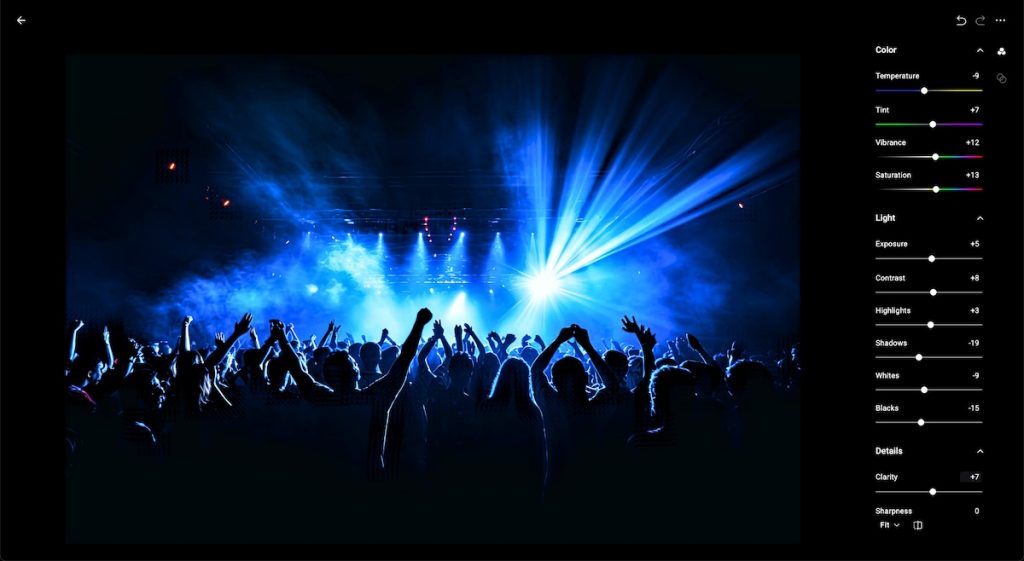
The value goes well beyond speed. Each gallery is branded with your studio’s logo and contact details, so every share on social media becomes free marketing. What begins as one concert often leads to referrals, repeat bookings, and partnerships with venues, festivals, and promoters.

Honcho also helps you build long-term connections. Lead capture forms within the gallery allow visitors to leave their details, sign up for updates, or share feedback. The instant delivery creates an unforgettable first impression, and the built-in tools help you nurture those relationships well after the final encore.
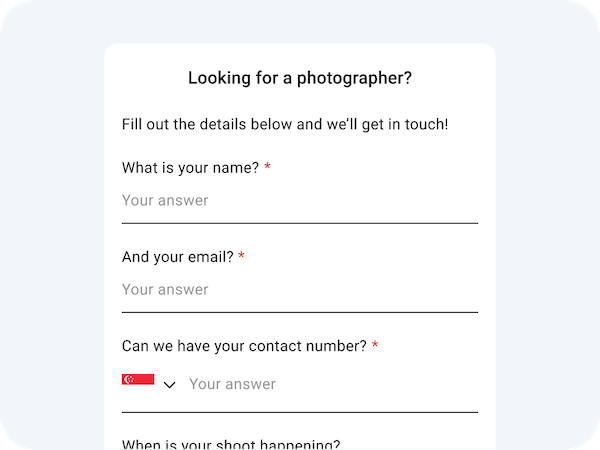
After the concert, Honcho provides clear analytics on your gallery’s performance. You can see exactly how many fans accessed the gallery, how many downloaded their photos, and which images drew the most engagement. The platform also tracks social sharing, giving you an idea of how widely your photos circulated online. These insights help you understand what kind of moments resonate most with audiences, while also giving organizers, artists, and sponsors measurable proof of the gallery’s reach and impact.

Using Honcho in your concert photography goes beyond quick delivery. It elevates the entire experience, making it faster, smoother, and more memorable for fans and performers alike. Over time, that level of service becomes just as powerful as the photos themselves.
FAQ
Use manual mode with a wide aperture (f/1.8–f/2.8), fast shutter speed (1/200s or higher), and a high ISO (start at 1600–3200). Adjust settings based on lighting and movement.
Avoid using flash unless explicitly permitted. Flash can distract performers and audience members, and may be prohibited by the venue.
Anticipate key moments, focus on expressive facial expressions and dynamic movements, and include audience reactions to convey the atmosphere.
Essential gear includes a camera with fast autofocus, a fast lens (e.g., 50mm f/1.8), and extra batteries and memory cards.
Begin by shooting local shows, building a portfolio, and networking with publications to secure photo passes for larger events.
Shooting in RAW allows for greater flexibility in post-processing, especially in challenging lighting conditions.

